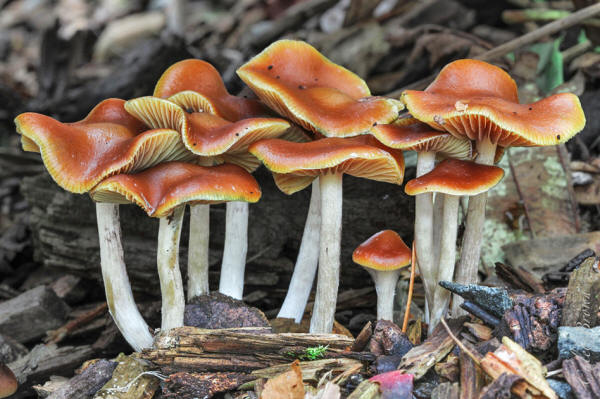|
from
BigThink Website has more to do with sending insects on terrifying trips than it does making Phish sound good.
We drink the waste of sugar-eating bacteria, smoke the leaves of garden-variety weeds, and munch on mushrooms whose chemicals give us such a strange experience we have to call it magic.
We've been doing this for thousands and thousands of years, too:
But the very fact that magic mushrooms exist and that their main psychoactive ingredient - psilocybin - can provide such a powerful experience is odd.
Nearly all of the qualities of the various species of life on Earth have some kind of functionality.
It's there to screw with
insects; specifically, those insects that wouldn't mind chowing down
on a fungi's mushroom or on the food that fungi themselves like to
eat - dung and wood.
It doesn't appear as
though a common ancestor developed the ability to produce psilocybin
and passed it down to its offspring. Instead,
five distinct, distantly related
families of fungi make psilocybin.
So, it's extremely weird that it's popped up in disparate species of fungi.
one of the psilocybin-producing fungi
that the researchers studied.
Instead, the researchers surmised that horizontal gene transfer must be the culprit. Horizontal gene transfer doesn't take up much space in the general public's understanding of evolution.
We typically think of evolution as gradual, random changes in the gene that accidentally improve the species' fitness in its environment, which are then passed down to offspring.
But genetic material can
also be passed between distinct but co-existing species.
Sometimes, transposons
take another gene along with them,
occasionally getting mixed up with viruses, insects, or other third
parties who then deposit the gene into another species.
Rather than there being a branch on the tree of life that traces a distinct line of critters with BovB, instead it looks more like a Jackson Pollock painting - random islands of animals with the BovB gene.
Clearly, BovB didn't get to these disparate species by a common ancestor. Instead, it jumped around, hitching rides with third-parties like viruses and insects.
Here's a video explainer:
The interesting part about this is the outsized effect the fungi's environment plays on their evolution. Fungi compete with insects for dung and wood and also are frequently eaten by insects themselves. Producing psilocybin is a great way to scramble the brains of any insect that gets too familiar.
Because psilocybin
production is so useful to fungi that eat dung and wood, when genes
for psilocybin production are randomly inserted in their genome,
they thrive, out-producing non-psilocybin-producing fungi.
In fact, most of the chemicals humans use recreationally or medicinally were made by plants and fungi to ward off insects (Explaining Human Recreational Use of 'Pesticides') that would eat them or eat their food.
Now, thanks to this research, we have another way to identify what kinds of plants and fungi might hold secret chemicals we can use to improve our lives.
Video
|





